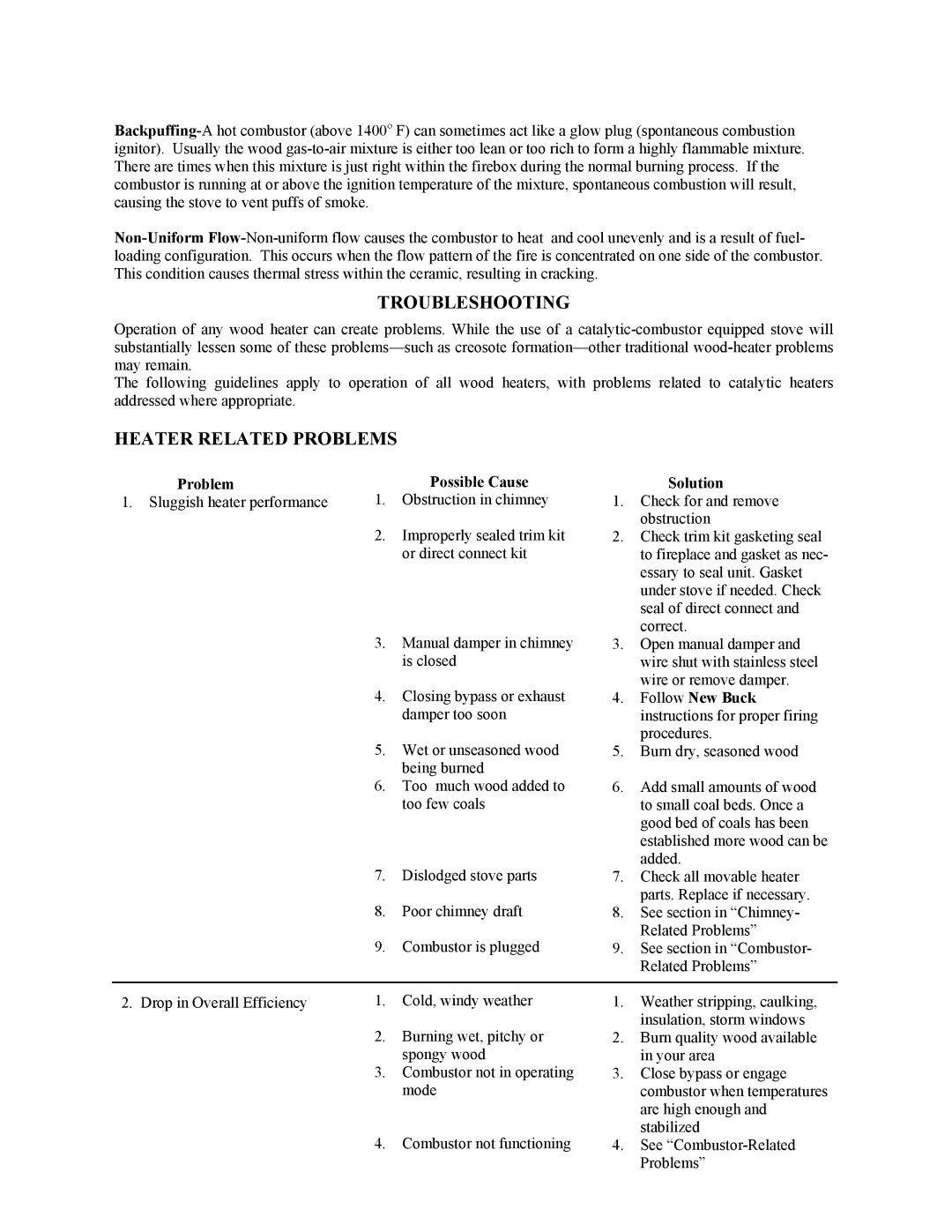TROUBLESHOOTING
Operation of any wood heater can create problems. While the use of a
The following guidelines apply to operation of all wood heaters, with problems related to catalytic heaters addressed where appropriate.
HEATER RELATED PROBLEMS
| Problem |
| Possible Cause |
| Solution |
1. | Sluggish heater performance | 1. | Obstruction in chimney | 1. | Check for and remove |
|
| 2. | Improperly sealed trim kit |
| obstruction |
|
| 2. | Check trim kit gasketing seal | ||
|
|
| or direct connect kit |
| to fireplace and gasket as nec- |
|
|
|
|
| essary to seal unit. Gasket |
|
|
|
|
| under stove if needed. Check |
|
|
|
|
| seal of direct connect and |
|
| 3. | Manual damper in chimney |
| correct. |
|
| 3. | Open manual damper and | ||
|
|
| is closed |
| wire shut with stainless steel |
|
| 4. | Closing bypass or exhaust |
| wire or remove damper. |
|
| 4. | Follow New Buck | ||
|
|
| damper too soon |
| instructions for proper firing |
|
| 5. | Wet or unseasoned wood |
| procedures. |
|
| 5. | Burn dry, seasoned wood | ||
|
|
| being burned |
|
|
|
| 6. | Too much wood added to | 6. | Add small amounts of wood |
|
|
| too few coals |
| to small coal beds. Once a |
|
|
|
|
| good bed of coals has been |
|
|
|
|
| established more wood can be |
|
| 7. | Dislodged stove parts |
| added. |
|
| 7. | Check all movable heater | ||
|
| 8. | Poor chimney draft |
| parts. Replace if necessary. |
|
| 8. | See section in “Chimney- | ||
|
| 9. | Combustor is plugged |
| Related Problems” |
|
| 9. | See section in “Combustor- | ||
|
|
|
|
| Related Problems” |
|
|
|
|
|
|
2. | Drop in Overall Efficiency | 1. | Cold, windy weather | 1. | Weather stripping, caulking, |
|
| 2. | Burning wet, pitchy or |
| insulation, storm windows |
|
| 2. | Burn quality wood available | ||
|
|
| spongy wood |
| in your area |
|
| 3. | Combustor not in operating | 3. | Close bypass or engage |
|
|
| mode |
| combustor when temperatures |
|
|
|
|
| are high enough and |
|
| 4. | Combustor not functioning |
| stabilized |
|
| 4. | See | ||
|
|
|
|
| Problems” |
